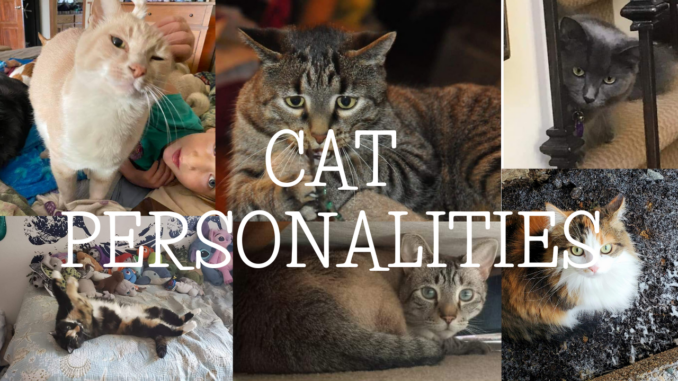
What is your cat’s personality? Learn about the basic personality types, how they interact with you and other pets, and how to keep them safe.
Is it personality or cat-anality? Purr-sonality perhaps? In any case, knowing and understanding your cat’s personality will help you have a better relationship with him or her.
Unsocial Cat
The unsocial cat is fearful and avoids interaction with people. This kind of cat may have been born feral and has no bond with people. He may see humans as something to fear and to be avoided.
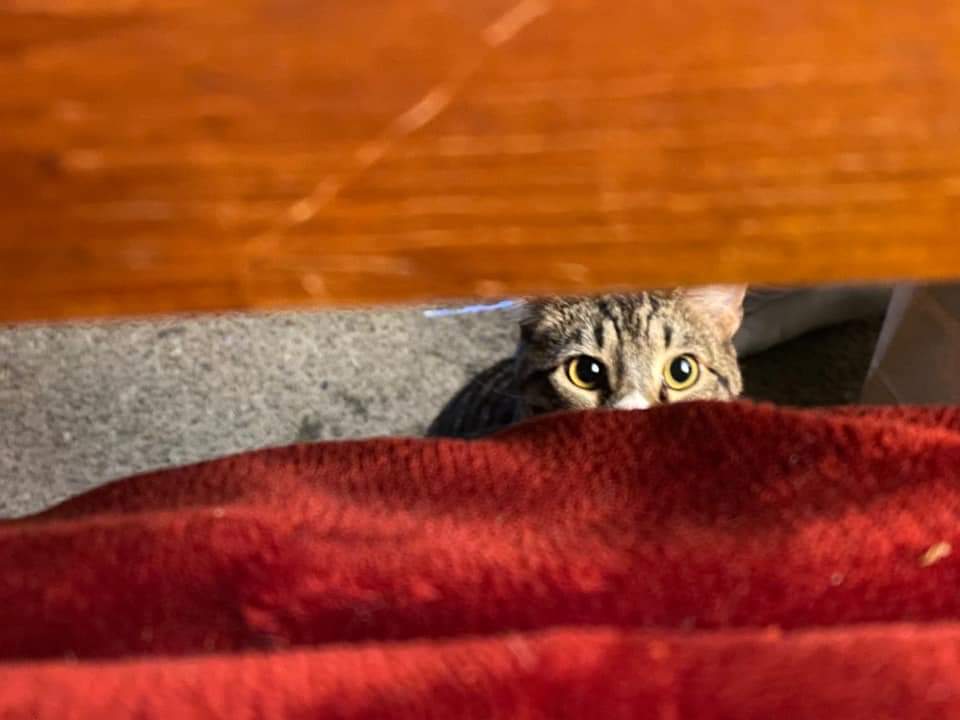
This kind of cat may also have been born into a hoarding situation where conditions were bad and there were so many cats that there was no possibility of individual attention. I have seen many cats from such situations and, while some adjust to normal life and become friendly, others are too traumatized and never come out of their shell.
On the other hand, some cats are just genetically unsocial, and despite being raised in ideal conditions, still fear or behave aggressively towards people. My Mary Margaret is a perfect example. I had her since she was a nursing kitten yet she hates people and other cats. Loves dogs though, so go figure.
The unsocial cat will likely hide most of the time, or hang out away from human interaction. They do not like change so it can be very stressful for them to move, go to the vet, or accept a new animal or human roommate. Because they hide, you may not notice if they are not eating or acting ill. You’ll want to keep a close eye on this kind of kitty to make sure they are in good health.
Shy Cat
The shy cat will also hide but, unlike the unsocial cat, does warm up to people he knows and can be very sweet. This kind of cat will avoid people he doesn’t know, and will usually disappear under the bed if a stranger comes to visit.
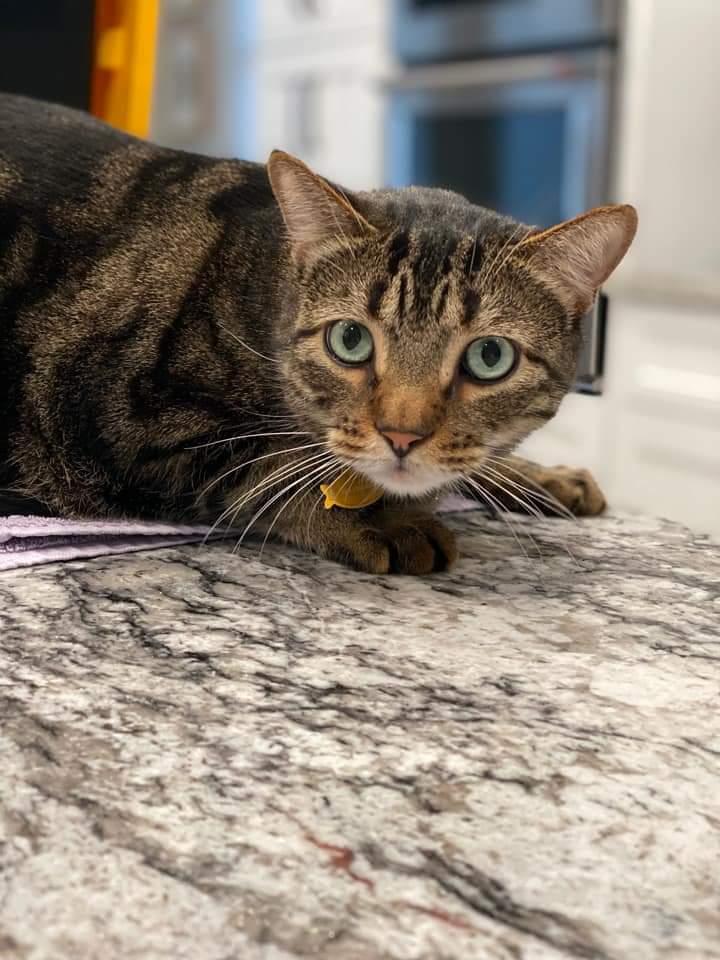
This kind of cat has positive associations with people and will seek out attention from family members. They may hide from pet sitters until they get to know them so it is important to figure out where they are and check on them.
They do not like change, but can adjust in time with the help of family members.
Outgoing cat
The outgoing cat is curious and not fearful, and will investigate new things. They generally like being around people and other pets. They won’t run and hide unless there is a frightening stimulus like sudden movement or a loud noise.
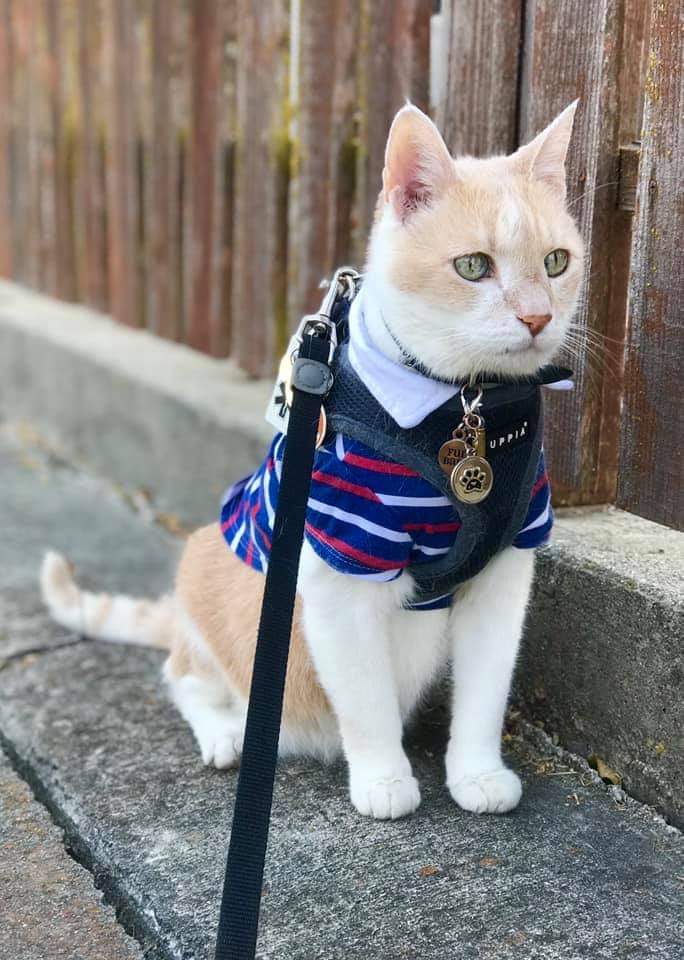
If your outgoing cat lives indoors, you will need to be careful when entering and exiting. Since they are so curious, they are likely to wait by the door and dart out if something gets their attention.
If this kind of cat is avoiding people or hiding, this is a good clue that they are ill. Any change from normal behavior should be investigated.
Everyone’s best friend
Everyone’s best friend is just as the name suggests. This kitty is the life of the party, very social, and always front and center.
They will come up to anyone, wind around their legs, and jump into their lap. My Elf is such a cat. When my friend came to visit with her three year old daughter, all the other cats hid, but Elf was delighted to make a new friend. No matter how clumsily she petted her or tried to pick her up, it was all good.
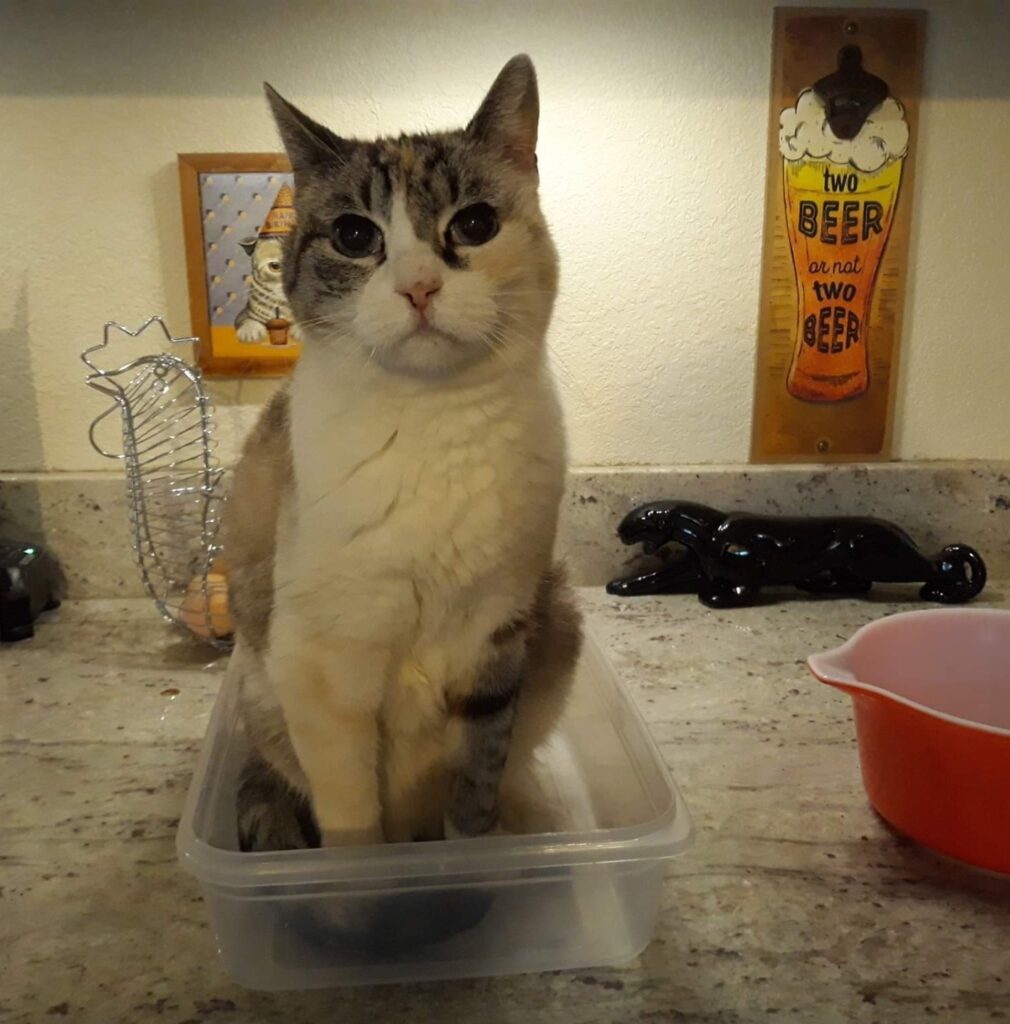
While this kind of cat is great fun, there is a concern that they will follow other people home if they go outside. I was once out walking and a cat I didn’t know followed me for several blocks! I was concerned and wanted to shoo him away, but not scare him out into traffic.
While I’m not a fan of collars on cats, this cat may be an exception. A bright collar with ID tag will clearly tell others that this cat has a family and is not free for the taking.
Multi cat households
Personalities play a big part in the dynamics of multi-cat homes. There are as many personality differences in cats as there are in people, but there are some common combinations.
Very often in the two-cat household, there will be one outgoing and one shy cat. You will notice if you watch that the outgoing cat often encourages this dynamic, pushing the shy one back so they can get all the attention. The shy cat will follow the outgoing cat, relying on their confidence to feel safe and secure.
In a larger group of cats there will be friends and social groups, not unlike those of people. Imagine your high school cafeteria, only with cats. Some will be great friends, sleeping and grooming together. Others are playmates, chasing each other, playing hide-and-seek, and wrestling. Some will like only the friends in their group and exclude others.
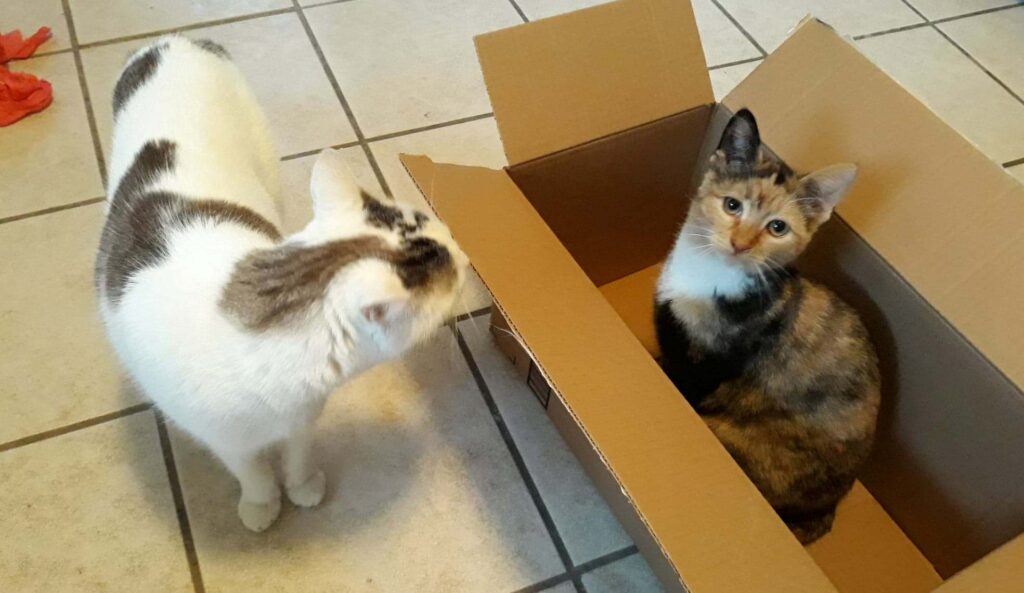
In a group there may be one or more bullies. These cats, often male, will chase and harass the others. They may have one other cat that they particularly dislike and torment. If they stand their ground, the bullying usually stops, but if they run, it unfortunately will continue. A bully may prevent other cats from eating or using the litter box. If you have problems with someone peeing outside the box, this could be a cause.
You must be especially vigilant with a larger group of cats because it is easy to miss signs of illness. If everyone eats out of the same bowls, it is nearly impossible to tell if one isn’t eating. Be aware of each cat’s normal behavior and note any changes. Don’t hesitate to call your veterinarian and ask for advice if you have any concerns.


Be the first to comment